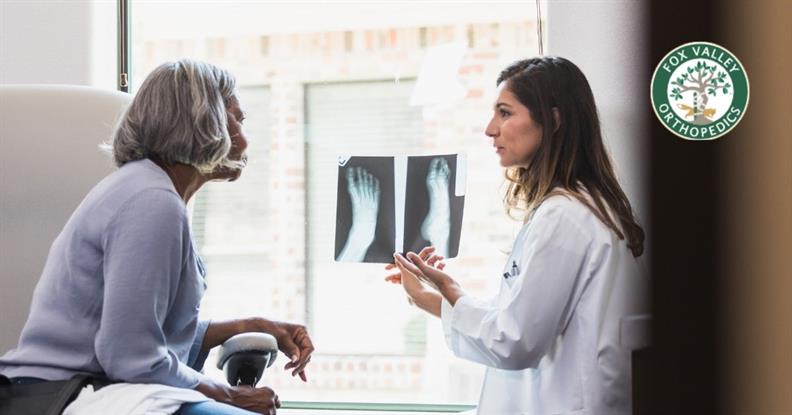When Is Joint Replacement Surgery Necessary?
- Category: Blog
- Posted On:
- Written By: Vincent Cannestra, MD

If your hip, knee, or shoulder is severely damaged by arthritis or injury, it may be hard for you to perform simple activities such as walking, climbing stairs, or lifting your arm. You may even begin to feel pain while you’re sitting or lying down. This pain and limited mobility are the main reasons people decide to have joint replacement surgery.
According to orthopedic surgeon Vincent Cannestra, M.D. of Fox Valley Orthopedics, joint replacement surgery provides complete pain relief in more than 95% of patients. Within months of surgery, most patients can participate in recreational activities such as golf, skiing, doubles tennis, and hiking.
Your doctor may request tests to see how much your joint is damaged. Surgery should only be a consideration after other treatments, such as exercise, medications, and injections, have failed.
Dr. Cannestra also cites the following factors that weigh into whether joint replacement surgery is right for you:
- Your age. The operation is safe for people of all ages. But artificial joints typically last a minimum of 15 to 20 years. Someone who is younger than age 65 may need to have a second surgery. However, this also depends on a person’s activity level, weight, genetics, physical demands, and other factors.
- Your health. Heart disease, diabetes, weight, and other conditions should be under control before surgery.
- Your commitment to recovery. For successful rehabilitation, you will need to follow a strict exercise schedule and physical therapy program for several weeks.
- Whether lesser invasive procedures such as arthroscopy (an outpatient procedure), cartilage transplantation, or partial replacement surgery are a better option for you.
- Recently minimally invasive surgery (MIS) has provided much of the improvement in joint replacement procedures. MIS allows smaller incisions to be made with less cutting of the muscle and tendons. This contributes to less pain and swelling after surgery and a quicker recovery.
After Joint Replacement Surgery
“Battling stiffness, swelling, and soreness is important after surgery,” states Dr. Cannestra. “You will be encouraged to move and use your new joint the day of surgery. Immediate full weight bearing is allowed for hip and knee replacements. You’ll also be taught various exercises to improve strength, flexibility, and range of motion in your new joint.”
Pain management protocols will help relieve any remaining discomfort. Other complications—such as blood clots or an infection—are rare. Most people leave the hospital within one day after surgery. In fact, with our rapid recovery protocols, many people can return home on the same day as their surgery. That said, you will need to continue your exercise program at home or at an outpatient physical therapy facility.
In less than three weeks, you will begin to feel strong enough to drive or perform light activities. In less than six weeks, you will be able to lift heavy items or stand for longer periods of time. However, many people can return to work even before this.
Gender-Specific Knee Replacement
For many years, knee replacements have been “one size fits all.” But research has proven that there are significant anatomical differences between men’s and women’s knees, specifically in terms of shape, size, and alignment. This research has led to the development of an artificial knee designed specifically for women which Dr. Cannestra has been using for years.
“This particular knee implant is shaped more like a woman’s knee in that it’s narrower and thinner in some areas than in a man’s knee replacement,” explains Dr. Vincent Cannestra. “Essentially, the manufacturer has made adjustments in their artificial knee to better fit the population that accounts for nearly two-thirds of all knee replacement procedures in the U.S.—women.”
The female-specific knee is designed to minimize pain in women following the procedure as well as maximize the amount of bending or flexion of the knee after surgery.



